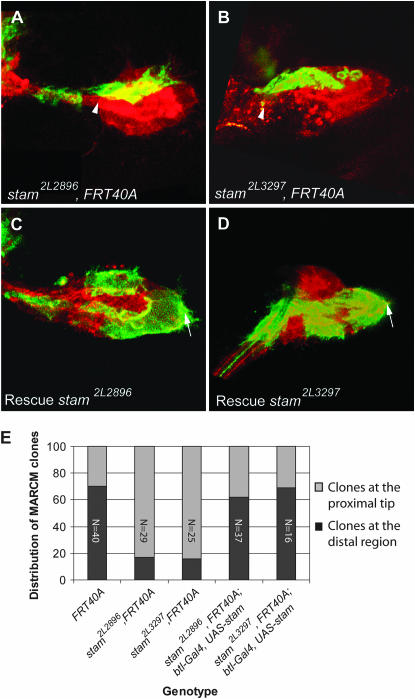Figure 5.—
Homozygous stam mutant MARCM clones display a migration phenotype. (A–D) Confocal micrographs of a Drosophila third instar larval dorsal air sac primordium. All tracheal cells are labeled in red (RFP-moesin). Cells belonging to the MARCM clones are labeled in green (CD8-GFP). MARCM clones were induced for the stam2L2896, FRT40A (A) and for the stam2L3297, FRT40A (B) mutant. Overexpression of a wild-type stam cDNA in tracheal cells of stam2L2896, FRT40A (C) and stam2L3297, FRT40A (D) mutants rescued the migration phenotype. Arrows indicate the distal tip of the air sac primordium. Arrowheads indicate the proximal region of the air sac primordium. (E) Graphical representation of the statistical distribution of MARCM clones in the dorsal air sac primordium (gray, localization at the proximal region; black, localization at the distal growing tip). The FRT40A chromosome was used as a wild-type control. Wild-type clones colonized the distal tip of the growing air sac primordium in 70% of the cases. This proportion is dramatically reduced in the stam2L2896, FRT40A and stam2L3297, FRT40A mutants. Overexpression of stam in mutant MARCM clones restored a wild-type migration profile. The numbers refer to the total number of observed clones.

